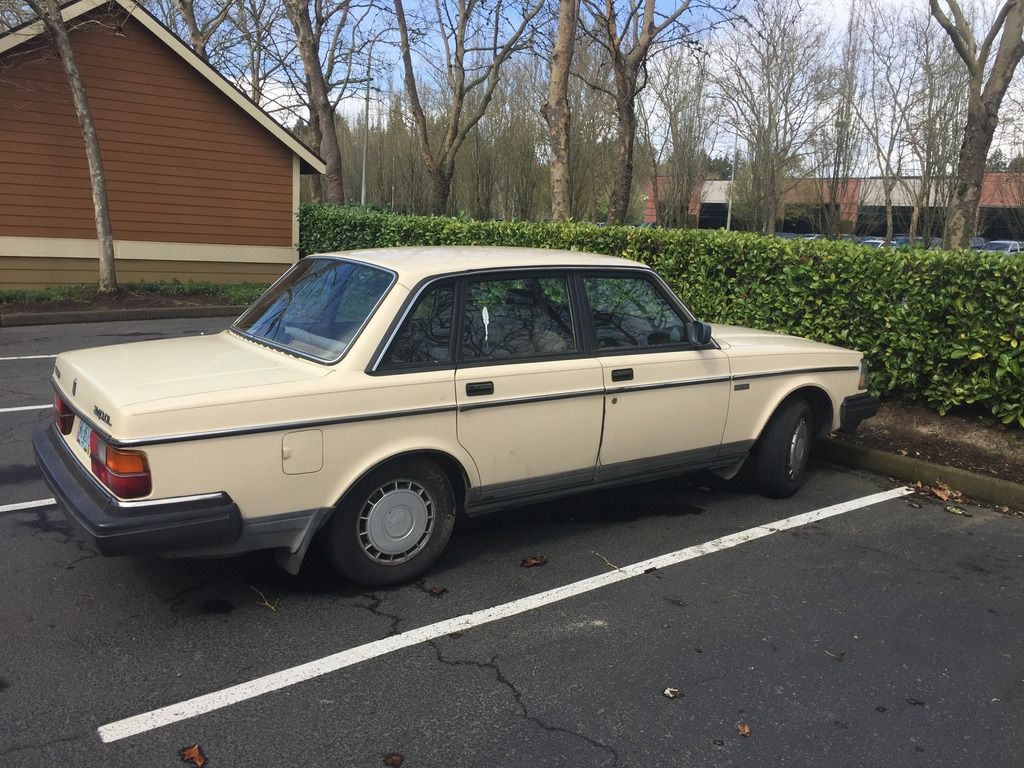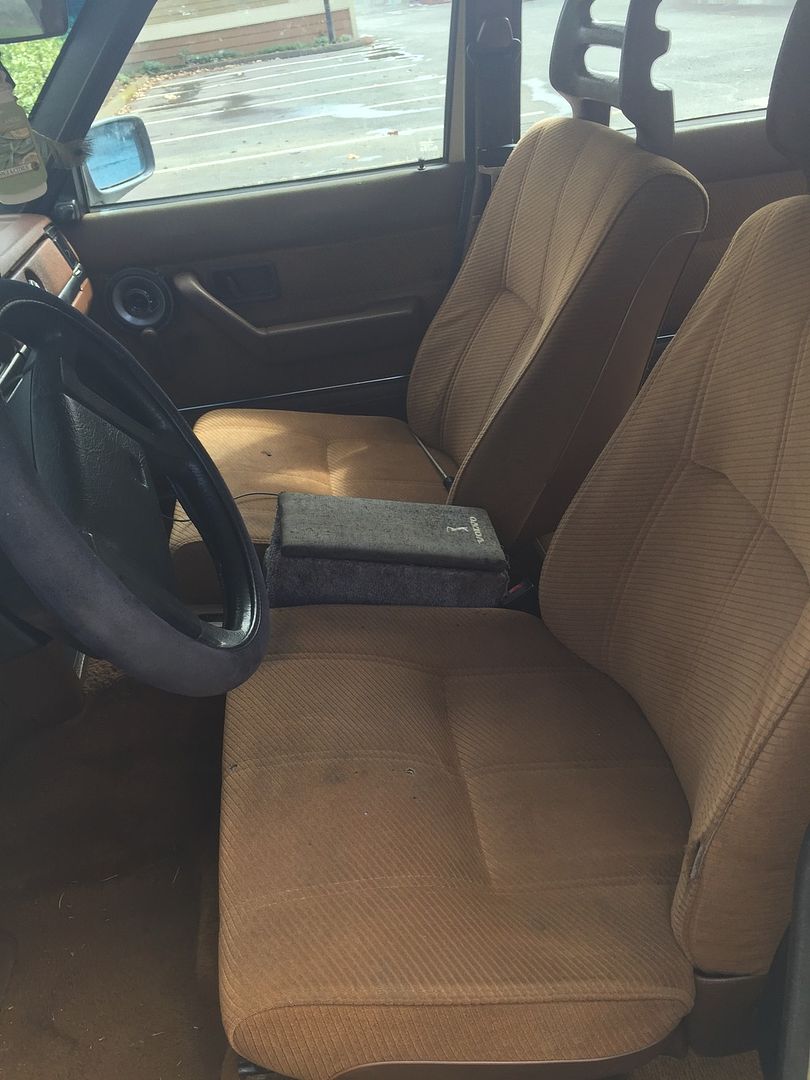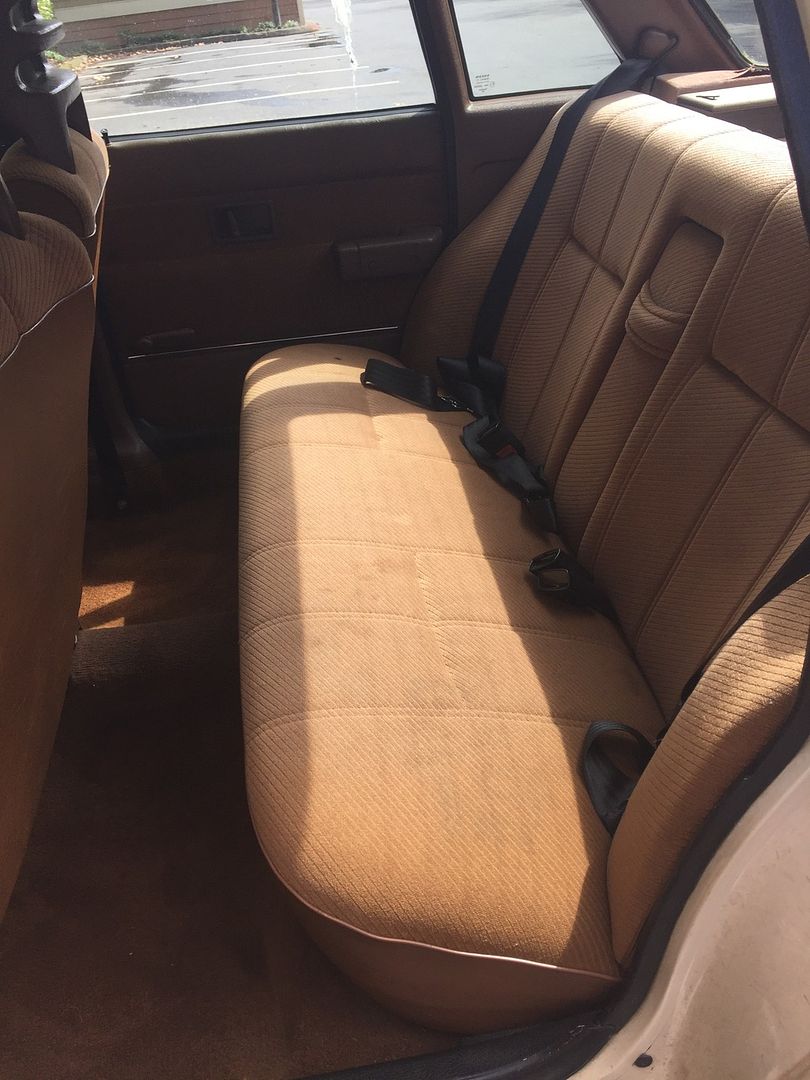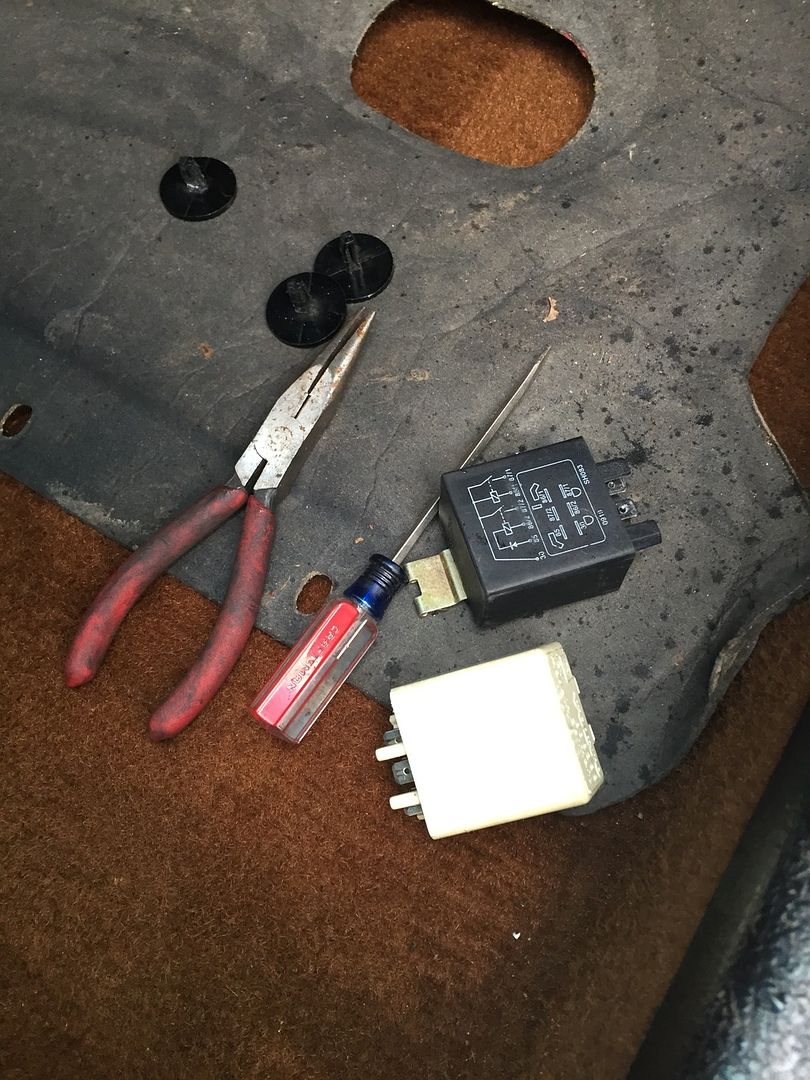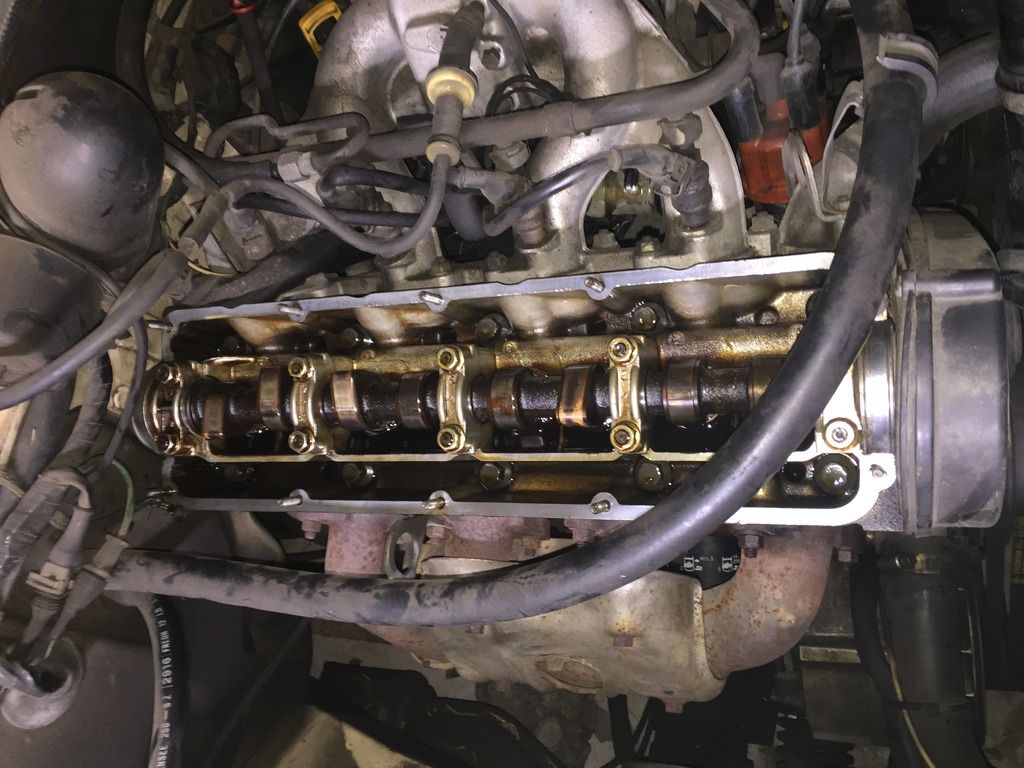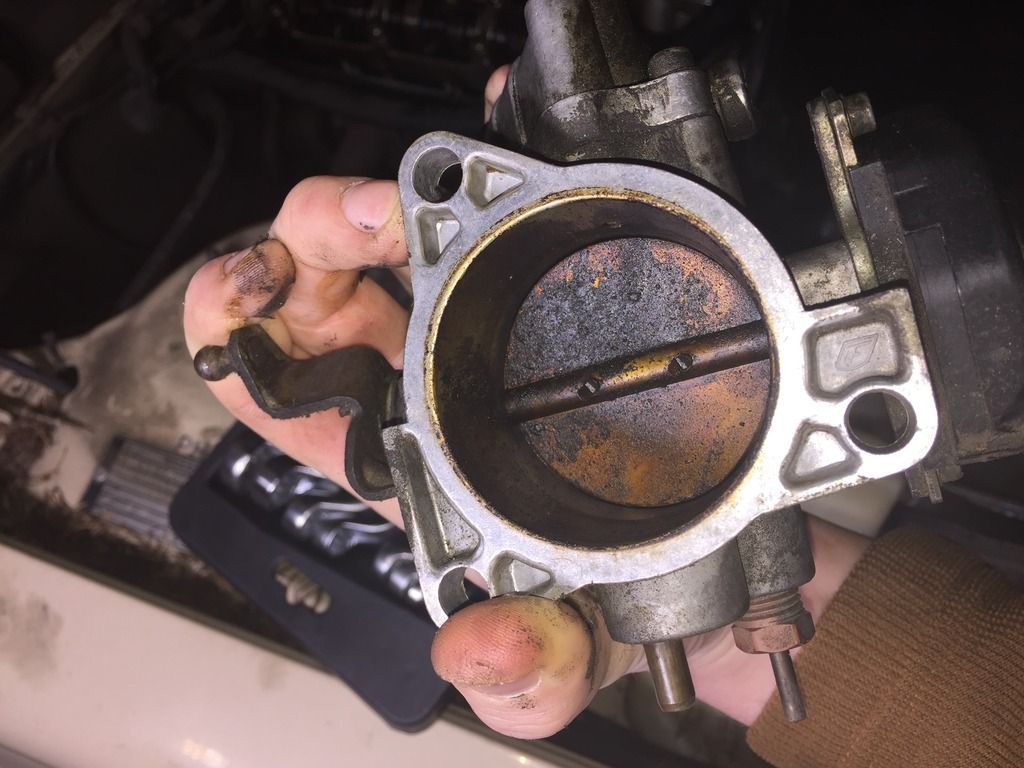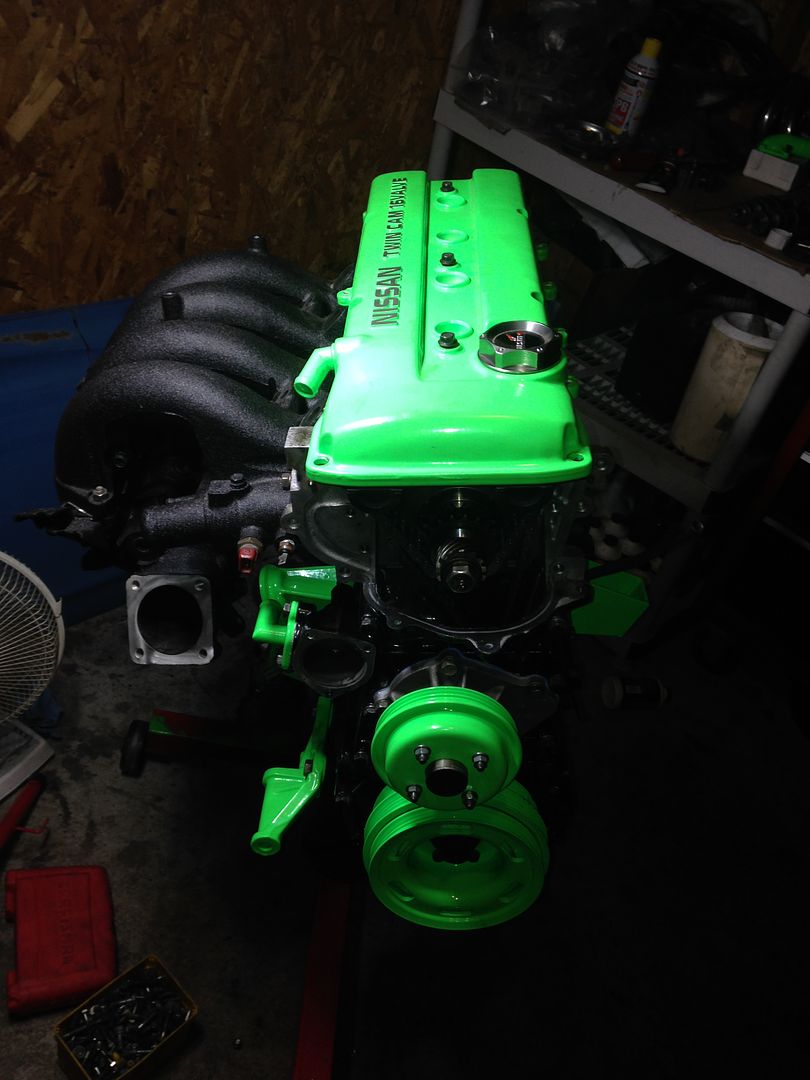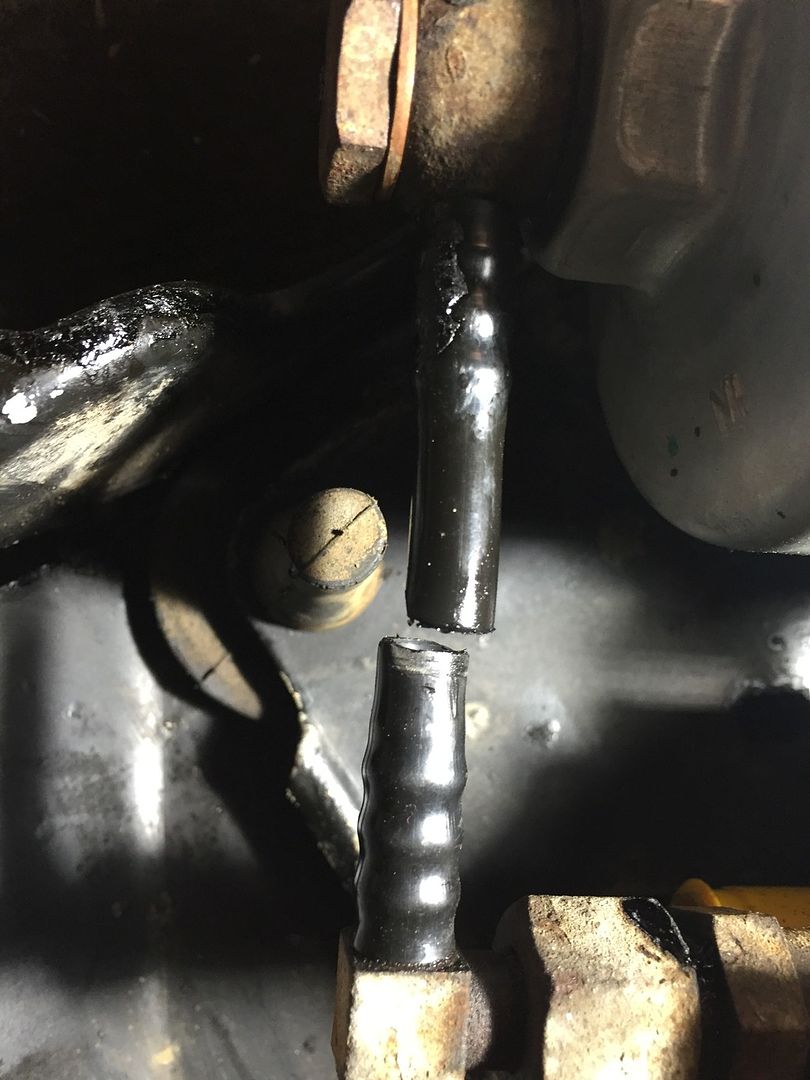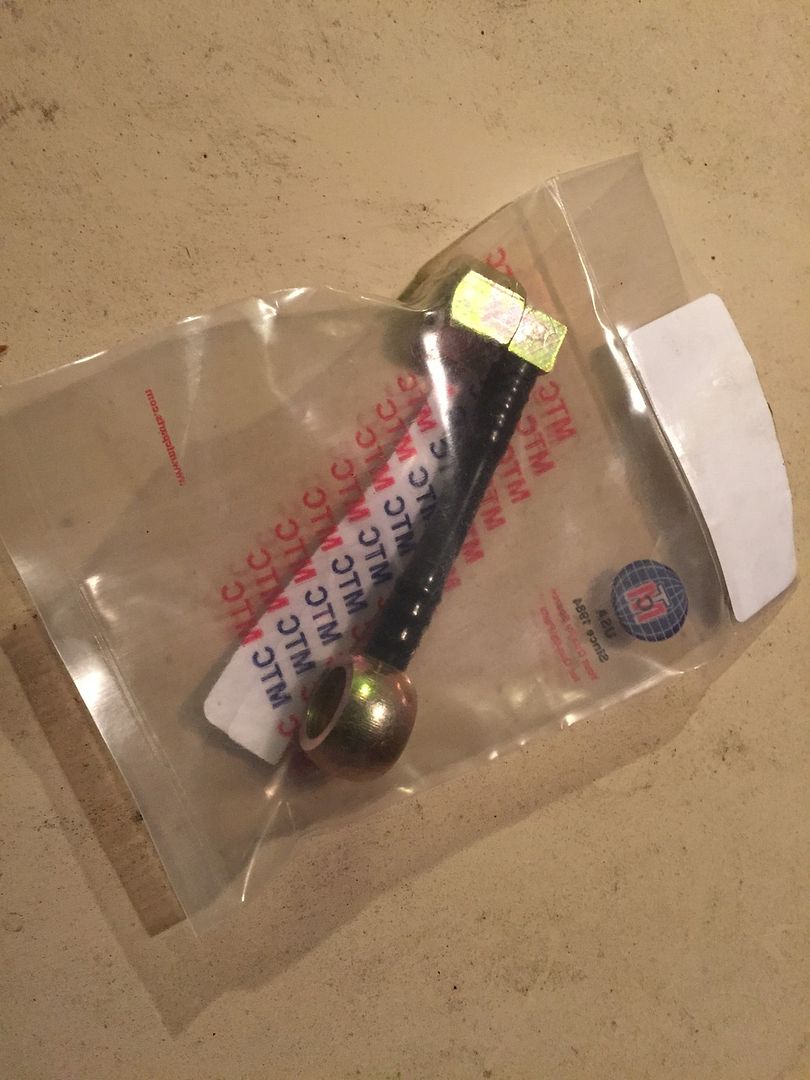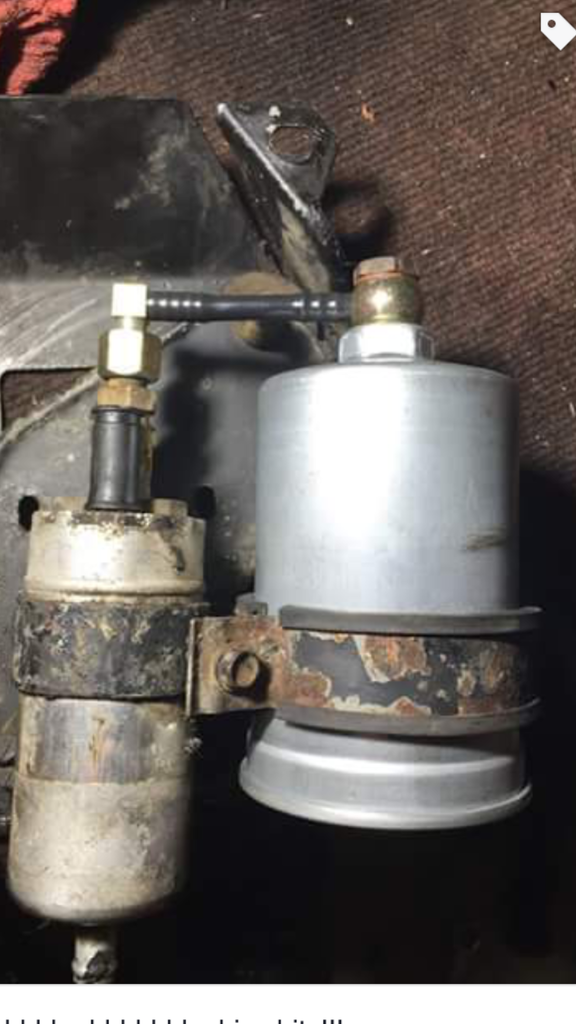|
"Q: how would I go about testing the external fuel pump"
A1. Quick and dirty but not comprehensive. Enable the fuel pumps using a jumper between fuses 4 and 6. Find the soft hose at the exit of the fuel pressure regulator. Find the vacuum hose from the manifold to the fuel pressure regulator. First take the vacuum hose off and be sure you don't see any fuel leaking from the regulator. Next, with your fingers upstream of the hose feel for the fuel leaving the regulator. If unsure you can feel it, give the hose a squeeze downstream and listen for the main pump to grunt a bit and you'll for certain feel the pressure with your fingers then.
Not comprehensive, because there's a remote chance the regulator could be defective in a way it hardly ever is reported to be.
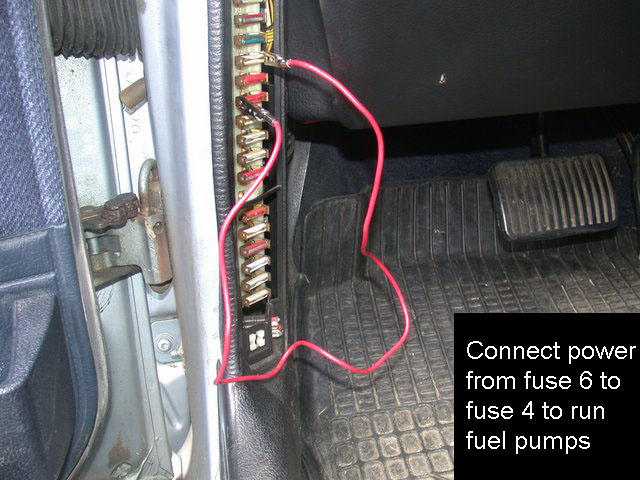
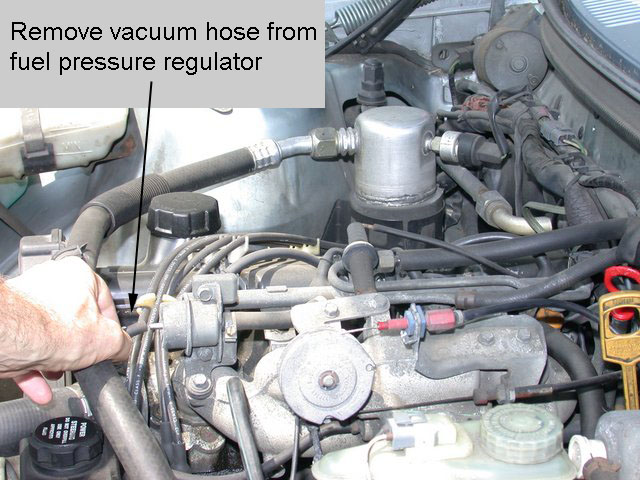

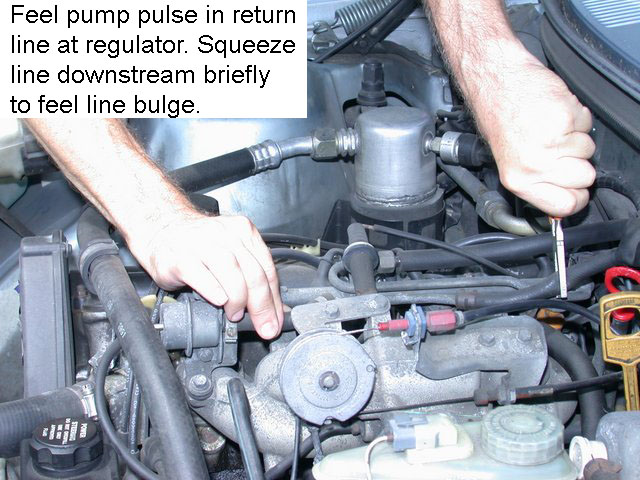
A2. Find the adapters for 14mm flare and make yourself a means of connecting your fuel pressure tester to the Bosch fuel rail. That's the comprehensive way, but a hurdle in time and sometimes money.
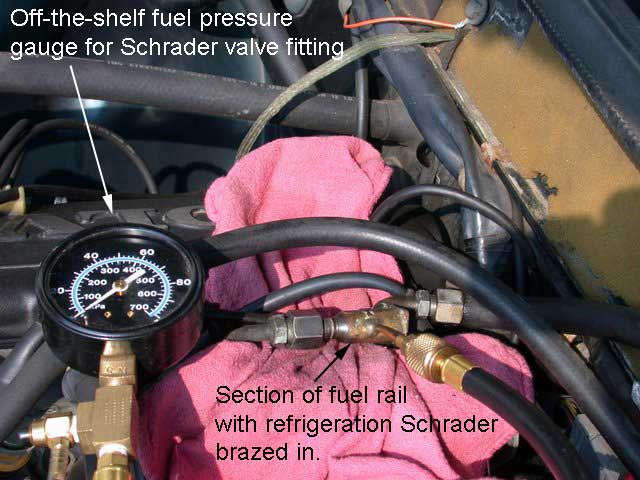
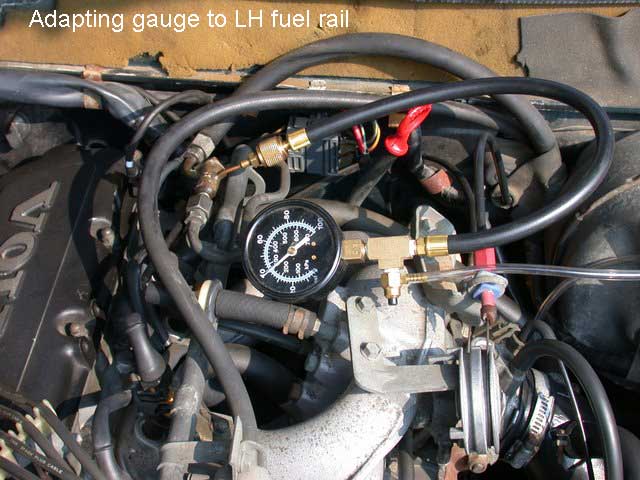
If you hear the main pump cavitating, suspect the tank pump or its hose.
http://cleanflametrap.com/transferPump.htm
Assuming you replaced the filter when you fixed the nylon connector hose, have you looked inside the tank for the rust which happens when a car is a barn find? You may have clogged your new one if it is as bad as some have reported. That would explain the run for a while and quit nature. Do a volume test from the return line. However, there are other explanations -- and most would say your symptom sounds like a faulty AMM operating the LH in limp home mode, but to me it sounds like what you suspect; fuel delivery.
--
Art Benstein near Baltimore
"Nothing sucks more than that moment during an argument when you realize you're wrong." -Diogenes
|

